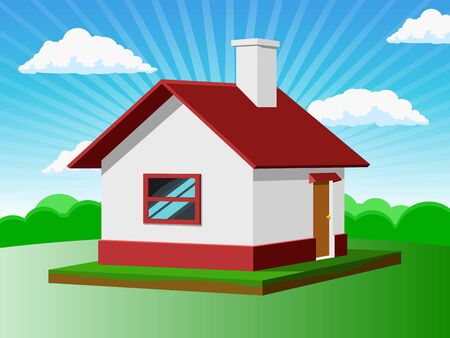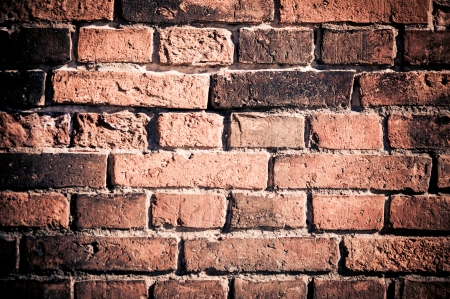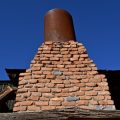Introduction: The Importance of Annual Chimney Inspections in the UK
In the United Kingdom, where period properties, Victorian terraces, and charming countryside cottages often feature traditional fireplaces, the chimney is much more than an architectural detail—it is a crucial component for home comfort and safety. An annual chimney inspection is not simply a recommendation; it’s a best practice that ensures your property remains secure, efficient, and fully compliant with current UK regulations. Regular checks help prevent potentially devastating hazards such as chimney fires and carbon monoxide leaks, both of which are distressingly common in homes with neglected flues. Furthermore, professional inspections ensure that your heating system operates at peak performance while extending its lifespan—a consideration particularly vital during the cold British winters. The table below highlights the key benefits of scheduling yearly chimney assessments for any UK homeowner or landlord:
| Benefit | Description |
|---|---|
| Safety Compliance | Ensures adherence to UK building regulations and fire safety standards |
| Fire Prevention | Identifies blockages and creosote buildup that could ignite |
| Energy Efficiency | Keeps chimneys clear for optimal airflow and heat output |
| Carbon Monoxide Protection | Detects faults that could cause dangerous gas leaks |
| Property Preservation | Prevents structural damage from undetected moisture or pests |
Whether you’re living in a bustling London townhouse or managing a picturesque rural retreat, making annual chimney inspections part of your property maintenance routine safeguards not only your investment but also the well-being of everyone under your roof.
2. Preparing for Your Chimney Inspection
Getting ready for your annual chimney inspection in the UK involves a series of straightforward yet vital steps to ensure the process runs smoothly and efficiently. Whether you own a period townhouse in London or a cosy cottage in the Cotswolds, thorough preparation not only facilitates access for the professional but also ensures that any potential issues are identified early. Here’s how to prepare:
Arranging Access
Before your scheduled appointment, it’s essential to clear the area surrounding your fireplace and chimney. Remove any decorative items, furniture, or obstacles that could hinder the surveyor or sweep’s movement. If you have pets or young children, consider keeping them away from the inspection area for their safety and convenience.
Access Preparation Checklist
| Task | Details |
|---|---|
| Clear Hearth & Surrounds | Move all décor, logs, baskets, and rugs away from the fireplace. |
| Provide Roof Access | If your chimney requires external inspection, ensure outdoor areas are accessible and ladders can be safely positioned. |
| Secure Pets & Children | Keep animals and youngsters out of the room during inspection for safety. |
What to Expect When Scheduling a Professional Sweep or Survey
The British approach to chimney care is methodical and detail-oriented. When booking a certified sweep—look for HETAS or Guild of Master Chimney Sweeps accreditation—you can expect them to arrive with specialist equipment tailored for both modern and historic properties. A typical visit includes:
- A visual inspection of the chimney pot and stack from ground level or roof (weather permitting)
- An internal examination using brushes and CCTV equipment if necessary
- The removal of soot, debris, and blockages—ensuring compliance with UK regulations on safe air quality
Professional Sweep: What They Bring
| Equipment | Purpose |
|---|---|
| Soot Sheets & Vacuum | To protect interiors and remove dust efficiently |
| CCTV Cameras | For detailed inspection of flue integrity |
| Specialist Brushes | Tailored to different chimney types common across UK homes |
By preparing your home ahead of time and knowing what to anticipate from your chosen professional, you help maintain both your property’s character and its safety standards—a quintessentially British approach to home care.

3. Visual Assessment: Exterior and Interior Checks
A thorough visual inspection is at the heart of an annual chimney check for British properties, blending both exterior and interior evaluations to ensure safety and longevity. Distinctive UK weather patterns, ranging from persistent rain to frosty winters, make these checks particularly crucial.
Exterior Inspection: Weathering and Structural Integrity
Begin outdoors by surveying the chimney stack for signs of weathering—a common concern across the UK, especially in exposed rural or coastal settings. Look for crumbling mortar, loose or missing bricks, and efflorescence (white salt deposits), all of which may indicate water ingress or frost damage. Ensure that flashing where the chimney meets the roof remains watertight and free from corrosion.
Pot and Cowl Condition
The chimney pot and cowl serve vital functions in preventing rain entry and discouraging birds from nesting. Inspect these components closely; a cracked pot or dislodged cowl can lead to costly repairs or blockages. In Britain, where Jackdaws are notorious for nesting in chimneys, a secure bird guard is highly recommended.
Exterior Visual Inspection Checklist
| Inspection Point | What to Look For | Recommended Action |
|---|---|---|
| Brickwork & Mortar | Crumbling, cracks, damp spots | Repointing or repair as needed |
| Flashing | Lifting, rust, gaps | Seal or replace flashing |
| Pots & Cowls | Cracks, loose fittings, debris | Secure/replace pots or cowls; fit bird guard if absent |
| Soot Staining (exterior) | Dark patches below pot/cowl | Investigate for blockages or poor draft |
Interior Inspection: Soot Staining and Lining Integrity
Inside the property, examine around the fireplace opening for any soot staining on walls or ceilings—a tell-tale sign of poor ventilation or previous chimney fires. For older British homes with open fires or multi-fuel stoves, check that the flue liner (if present) is intact without visible cracks or significant deposits.
Interior Visual Inspection Checklist
| Inspection Point | What to Look For | Recommended Action |
|---|---|---|
| Soot Staining (interior) | Black marks above fireplace, musty odours | Arrange professional cleaning; check ventilation |
| Lining/Flue Condition | Cracks, bulges, heavy soot build-up | Liner replacement; schedule a sweep if required |
| Dampness/Mould Near Chimney Breast | Patches of damp or mould growth on surrounding walls | Treat moisture source; improve ventilation; seek expert advice if persistent |
A meticulous visual assessment—both outside and in—forms the foundation of responsible chimney care in UK homes. Combining practical checks with a keen design eye ensures your period property remains safe while preserving its charm.
4. Safety and Compliance: Recognising Common Hazards
When it comes to UK properties, ensuring your chimney is safe and compliant is about more than just avoiding a smoky living room; it’s a vital part of protecting your home and meeting legal obligations. Below, we highlight the key safety aspects every homeowner should address during an annual chimney inspection, referencing both UK building regulations and typical insurance requirements.
Carbon Monoxide Risks
One of the most serious hazards associated with chimneys is carbon monoxide (CO) poisoning. This odourless, invisible gas can be fatal if undetected. To stay protected:
- Ensure you have a British Standard-compliant CO alarm fitted in any room containing a solid fuel burning appliance.
- Test alarms regularly and replace batteries annually.
- Have your flue checked for leaks or cracks that could allow gases to escape into your living spaces.
Blockages and Obstructions
Debris such as bird nests, leaves, or soot build-up can restrict airflow, increasing fire risk and decreasing efficiency. During inspection, professionals will:
- Check for and remove blockages using suitable tools and equipment.
- Look for signs of animal entry—using appropriate guards where necessary.
- Advise on frequency of sweeping based on fuel type (e.g., wood-burning requires more regular cleaning).
Correct Terminal Types
The terminal—the cap or cowl at the top of your chimney—must be suitable for your appliance and comply with UK standards. Using the wrong type can cause dangerous downdraughts or poor ventilation. Review the following table for a quick reference:
| Appliance Type | Recommended Terminal | UK Regulation Reference |
|---|---|---|
| Open Fires | Rain Cap with Bird Guard | Approved Document J |
| Gas Fires | Cowl Certified for Gas Use Only | Gas Safe Register Guidance |
| Wood/Multi-fuel Stoves | Anti-Downdraught Cowl | HETAS Recommendations |
Regulatory & Insurance Requirements
- Your chimney must comply with Building Regulations Approved Document J.
- A certificate from a HETAS or Gas Safe registered engineer may be required by insurers following inspection or installation.
- Lack of compliance can invalidate your home insurance in the event of fire or CO poisoning claims.
Key Takeaway:
A thorough annual chimney inspection is not just good practice—it’s essential for legal compliance, insurance validity, and above all, the safety of everyone in your home.
5. Routine Maintenance: Cleaning, Repairs, and Professional Advice
Routine chimney maintenance is vital for the safety, efficiency, and longevity of UK properties—especially period homes with original features. By adhering to an annual checklist of standard tasks and knowing when to consult a professional, you can safeguard your home while preserving its architectural charm.
Standard Chimney Maintenance Tasks
| Task | Recommended Frequency | Purpose |
|---|---|---|
| Sweeping the chimney flue | Annually (or more for frequent use) | Removes soot, creosote, and blockages to prevent fire hazards |
| Visual inspection of chimney stack & pot | Annually | Detects cracks, leaning, or weather damage early |
| Checking for damp or water ingress | Annually | Prevents internal damage and structural decay |
| Clearing debris from fireplace & hearth | As needed/seasonally | Keeps fireplace safe and efficient for use |
| Testing smoke alarms & carbon monoxide detectors | Annually or as per manufacturer’s advice | Ensures early warning in case of emergency |
When to Seek Professional Repairs
- Deteriorating mortar joints: Crumbling brickwork or missing mortar requires specialist repointing to maintain structural integrity.
- Persistent draught issues: If you experience downdraughts or smoke ingress, a qualified sweep or engineer should assess potential ventilation problems.
- Damp patches or staining: These may indicate a damaged flue liner or compromised flashing that needs expert repair.
- Crumbling or loose pots/cowls: Instability at the top of the stack can pose risks—always engage a professional for repairs at height.
- Soot build-up after regular sweeping: If deposits quickly reappear, there may be deeper structural issues best diagnosed by a certified technician.
Preserving Original Features in Period Properties
If you own a Georgian, Victorian, or Edwardian property, maintaining authenticity is paramount. Engage heritage specialists when restoring decorative mantels, cast-iron grates, or intricate tilework. Avoid harsh chemicals and modern interventions that might compromise historic materials. Use gentle cleaning products approved for older masonry and consider lime-based mortars for any pointing work. Consulting with conservation officers or local listed building experts ensures compliance with regulations while protecting your home’s historic character.
6. Seasonal Tips and Maintenance Calendar
Keeping your chimney in optimal condition throughout the year is essential for both safety and efficiency, especially given the UK’s unique blend of traditional fireplaces and contemporary wood-burning stoves. To help you plan your maintenance, here’s a season-by-season guide tailored for UK properties, considering both weather patterns and common usage habits.
Best Times for Chimney Inspections and Care
While annual inspections are crucial, the timing can make all the difference. The following calendar offers a practical approach to scheduling key tasks, ensuring your chimney performs beautifully through every British season.
| Season | Key Inspection & Maintenance Tasks | UK-Specific Reminders |
|---|---|---|
| Spring | Comprehensive sweep after winter usage; check for soot, debris, and bird nests; inspect for frost or moisture damage. | Ideal time as most chimneys have seen heavy use; take advantage of milder weather to book certified sweeps before peak season. |
| Summer | Address any repairs (masonry cracks, flue liner checks); install or check cowls and caps to prevent rain ingress and wildlife entry. | Long daylight hours and drier conditions make this perfect for external repairs; consider upgrades for energy efficiency. |
| Autumn | Pre-use inspection; clear any obstructions; test smoke/CO alarms; order firewood or fuel from reputable UK suppliers. | Book early—certified sweeps get busy as temperatures drop; ensure compliance with Clean Air Act requirements if using solid fuels. |
| Winter | Monitor usage and draft regularly; keep an eye on condensation or tar build-up; ensure good ventilation when heating is in frequent use. | Avoid burning wet wood—use only seasoned logs or approved smokeless fuels to reduce emissions and adhere to local regulations. |
Integrating Tradition with Modern Trends
The UK’s love affair with open fires meets today’s focus on eco-friendly heating. Whether you cherish a Victorian hearth or have invested in a modern multi-fuel stove, follow manufacturer guidelines and seek advice from HETAS-registered professionals for tailored care. Embrace smart carbon monoxide detectors and consider periodic updates to flue systems to align with evolving environmental standards.
Your Annual Reminder:
Schedule your main chimney sweep immediately after the heating season ends—typically between March and May. This not only ensures readiness for next winter but also extends the life of your chimney, keeping your home safe, stylish, and ready to welcome guests in true British comfort.


